Bread, Butter, Bretzel
(and croissants)
Many things have changed in Paris since I first stepped off a plane there at age 20, but one thing that hasn’t changed is the sight of Parisians heading home at the end of the work day carrying a baguette. Well, a couple of details have changed, namely that the loaf is more expensive (duh) and that it’s now encased in a paper bag. The days of being handed a naked baguette are definitely over. But, even though the locals may gripe (and they do) about their local bakery raising the price of a baguette 10 cents, from €1.30 to €1.40, I think it’s still a steal, and the heat of the bread, fresh out of the oven at nearly any time of day, inevitably kickstarts my salivary glands.
When we used to stay with our friends, Fabrice and Mary, in the 17th arrondissement, they would tell us which boulangerie to go to for baguette, which for croissants, and which for whole grain loaves. None of these bakeries was more than a five-minute walk from their apartment, of course. I thought they were being a bit over the top, but now I know better, and say the same thing to friends who stay with us. During our first month living in L’Immeuble Mouchotte, we checked out at least a dozen bakeries within a reasonable distance (read: 8 minute walk) and, to our pleasant surprise, our favorite croissants are at Lucia & Marcelo, right across the street from us, facing the Gare Montparnasse. All day, there’s a line out the door of a mix of local residents mainly buying bread, and people pulling suitcases, stocking up on sandwiches and goodies to eat on the train. People love ‘best of’ lists, but I’m by no means declaring these croissants the best in Paris. It’d take me a year to try all the bakeries in the city and, by the end of the year, kind of like painting the Golden Gate Bridge, I’d have to start all over again as I’d have forgotten what the first ones tasted like, some bakeries would have changed owners, and new ones would have opened. Anyway, at the end of the day, ‘best’ is just a subjective opinion, and do I really want to cross the river for a croissant?
So far, I’ve been referring to that universally recognized long thin loaf that I used to call “French bread” as a baguette, but what I actually ask for at the bakery is a pain de tradition française or simply une tradition. (Bien cuite because we like a well-done crust.) In order to bear the name tradition rather than that of its less regal baguette cousin, it must conform to the standards specified in the AOP or Appellation d’Origine Contrôlée. Literally hundreds of French foods and beverages are subject to the AOP, including wines, champagne, many cheeses, and plenty of other products ranging from Le Puy lentils to Haute Provence lavender oil. The tradition is subject to the Decret Pain (bread decree) of 1993 that it be made of four ingredients only: flour, yeast, salt, and water.* No preservatives, no freezing, no nonsense. Is it better than a regular baguette? Well, I think so, but you’re welcome to disagree.
What goes great with bread? Butter. And French butter is deeeeelicious, thanks mainly to the higher butterfat content. We keep it in the fridge and it’s still spreadable, whereas our butter in the US is hard as a rock. I’ll eat an éclair or a slice of tarte aux fraises avec crème pâtissière occasionally, but it’s fresh bread and butter that make me swoon. Even a few butters are AOP, namely beurre d’Isigny, Charente-Poitou, and Bresse, but we’re more than happy with the non-AOP butter we get from our cheese seller at the farmers market. (Notice how I wrote, “our cheese seller”? That’s what happens after you’ve been going to the same market stall for a while. They recognize you, give you little extras, make suggestions of things they think you’ll like. And you get proprietary about them.) The butter in the photo is the one we buy at the market. It’s from L’Île de Ré off the west coast, which looks like a lovely place to visit.
After gorging ourselves on tradition and butter for a couple of weeks, we began to crave some whole grain loaves, and we found delicious ones at La Petite Alsacienne, which is a short walk from our apartment in the other direction. (See top photo.) After trying four or five different ones, we settled on their Forêt Noire — a dense, moist whole grain. When we’re in the mood for something special (when are we not??), we also get the Stockholm — similar, but full of hazelnuts and dried fruit.
Both are delicious toasted, so we ask to have it sliced and then we freeze what’s left in a ziplock bag. In fact, one of the first things we bought — right after the toaster — was a wooden pince à grille-pain to avoid burning our fingers or getting a shock. It’s such a simple tool, and yet I’ve never seen one in the US. But maybe I didn’t look.
Gazing at all the goodies while waiting in line makes me hungry and greedy, so I often take home a piece of their fabulous strudel but, to quell my rumbling tummy, I buy a Bretzel to eat on the way home. See the motto on the window of La Petite Alsacienne in the top photo? Belle comme un bretzel. Crunchy on the outside, dense and doughy on the inside, covered in coarse salt: pure beauty.
*Bread Decree Article 2 — Bread called “pain de tradition française”, “pain traditionnel français”, “pain traditionnel de France” or some name combining these terms can only be sold if they have not been frozen at any point during their making, do not contain any additives, and are produced from a dough which has the following characteristics:
1. Made only from a mix of wheat flours suitable for making bread, safe water and cooking salt;
2. Fermented with yeast suitable for breads (Saccharomyces cerevisiae) and a starter, in the sense of article 4 of this Decree, or either yeast or a starter;
3. Relative to the weight of the (wheat) flour used will contain no more than
a) 2 percent broad bean flour;
b) .5 percent soya flour
c) .3 percent malted wheat flour


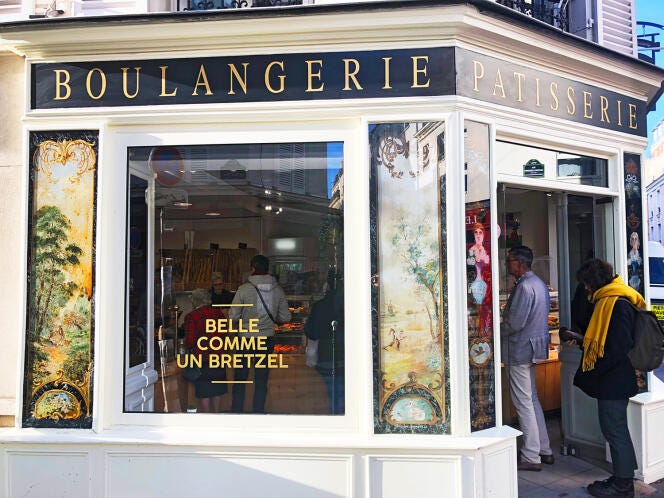

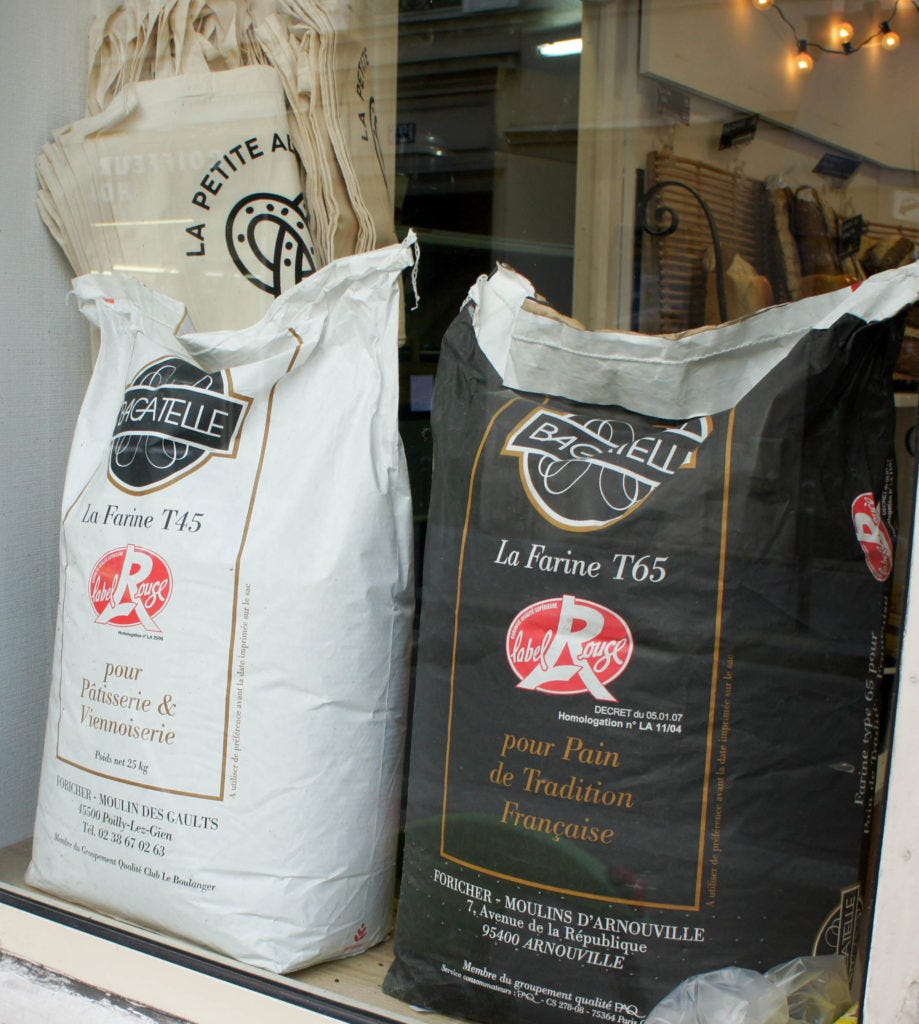
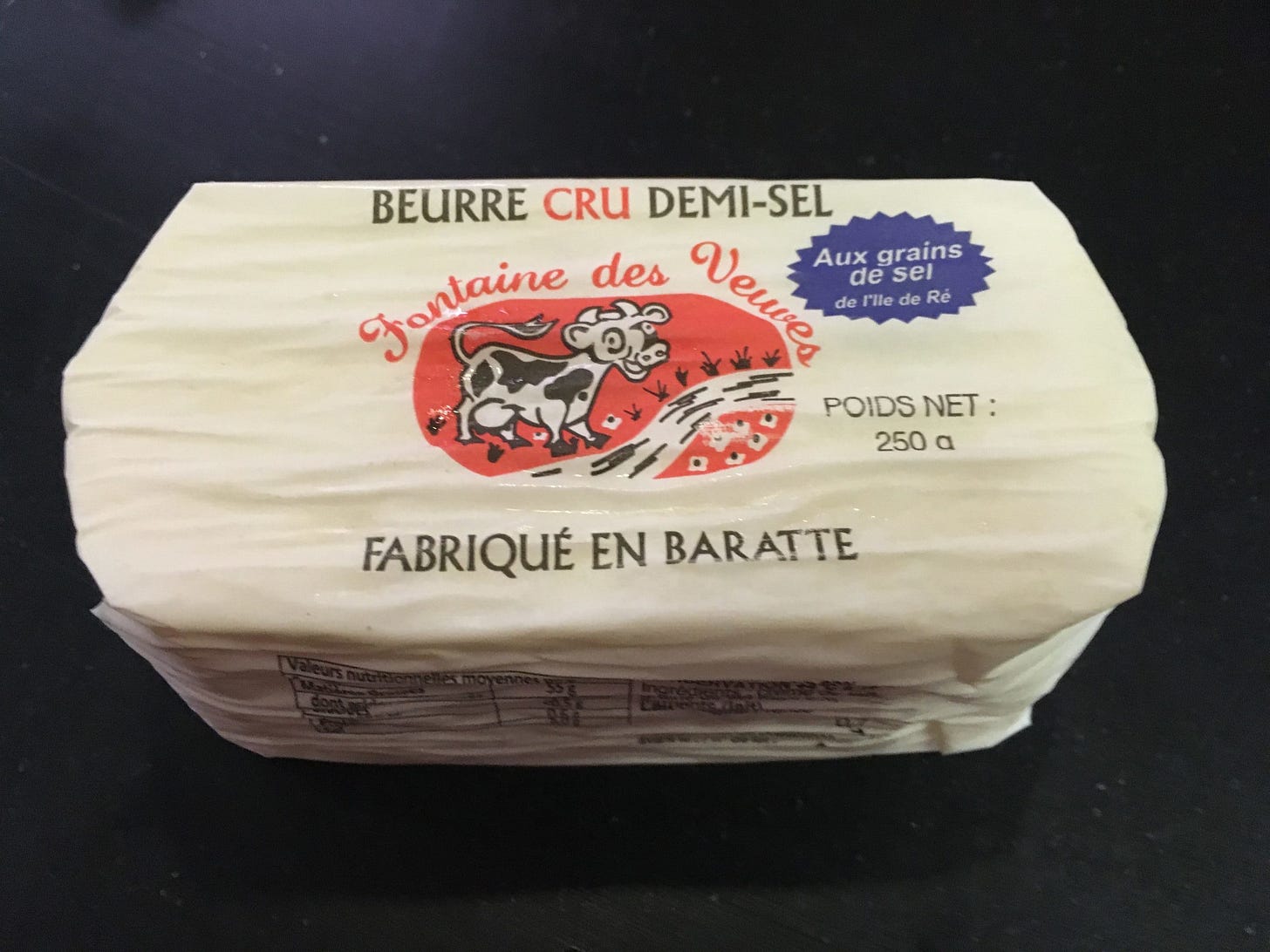
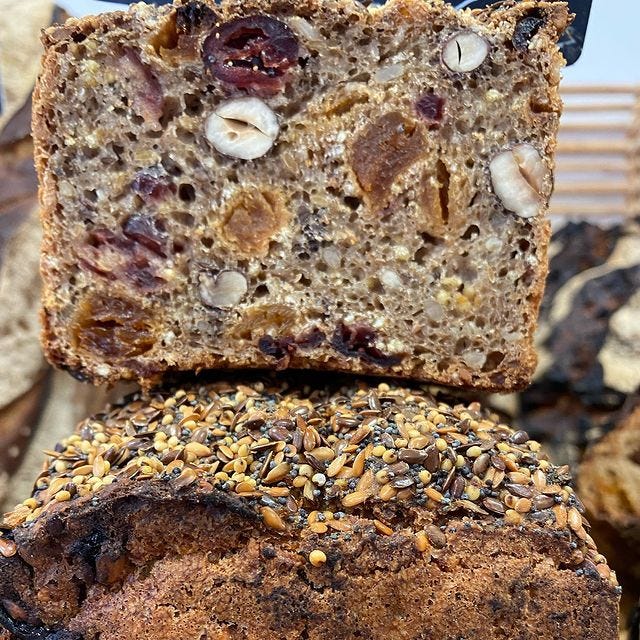
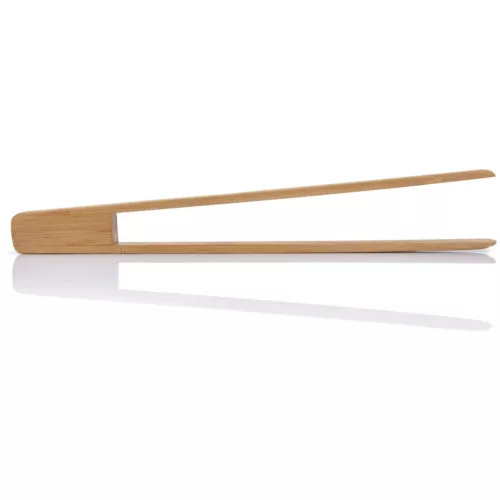

Paris is not my favorite city but I do love their baked goods!! And that butter! Lecker!!!
Makes me salivate!